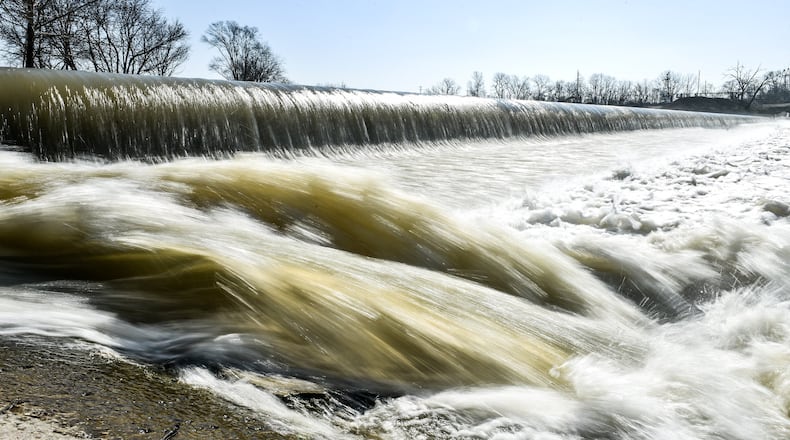MORE: The Great Miami River could be the next big regional destination
Disappearing soon will be the Tait Station Low Dam near the University of Dayton Arena, one of several that have been removed along the river and its tributaries in recent years. Officials envision a tourist destination called the Great Miami Riverway, a 99-mile stretch from Sidney through Hamilton.
“Removing Tait Station Low Dam is a real positive for the paddling community,” said Sarah Hippensteel Hall, Miami Conservancy District manager for watershed partnerships. “Low dams are notoriously dangerous. Boaters can be trapped at low dams and drown. Now, people will be able to more safely enjoy this section of the river.”
Elimination of the dams help fish migrate along the river, improving their habitat, and also improves water quality as the river flows freely. Several have been removed this century along the river and its tributaries.
MORE: Annexation furthers Fairfield’s plans for land along Great Miami River
Here’s what may happen with Hamilton’s two low-level dams:
Most likely to be removed, or significantly altered, is the upstream structure, known as the Two Mile Dam.
“We have to have a much better understanding of what’s happening before we can make any decisions,” Hippensteel Hall told the Journal-News.
The conservancy district built that dam, likely to control the movement of gravel in the river, she said.
“We are exploring a study that would tell us more about what that dam is actually doing in the river channel,” she said. The river carries a lot of gravel every day, and the gravel deposits change depending on the river’s flow.
Gravel deposits could undermine flood control along the river.
MORE: Hamilton unveils riverfront plan
Two Mile Dam again needs repairs, “and so now we’re starting to wonder if an expert can tell us exactly what that dam is doing, and is there a way for us to mimic that with other structures that are not so intrusive across the channel,” Hippensteel Hall said.
Before that study happens, officials must determine how much it will cost and how to pay for it.
One possible change would be gaps in Two Mile Dam to let kayakers and canoers paddle through it.
Then money would have to be found to alter the dam. The conservancy district, whose purpose is to prevent flooding, can’t spend money to remove dams for recreational reasons.
RELATED: Water-energy innovator has plan for Hamilton dam
With the downstream dam, Hamilton-based kWRiver Hydroelectric has proposed replacing it with a safer dam that would also generate electricity. It would be safer because its design would reduce the “churn” of water that can trap boats and people immediately downstream of the dam.
Jim Logan, Hamilton’s executive director for Infrastructure, previously said the city’s utilities and kWRiver worked through several complications. The project next needs to be licensed by the Federal Energy Regulatory Commission and U.S. Army Corps of Engineers.
“We turned it back over to (kWRiver), and it’s been a little bit quiet,” Logan said.
About the Author
